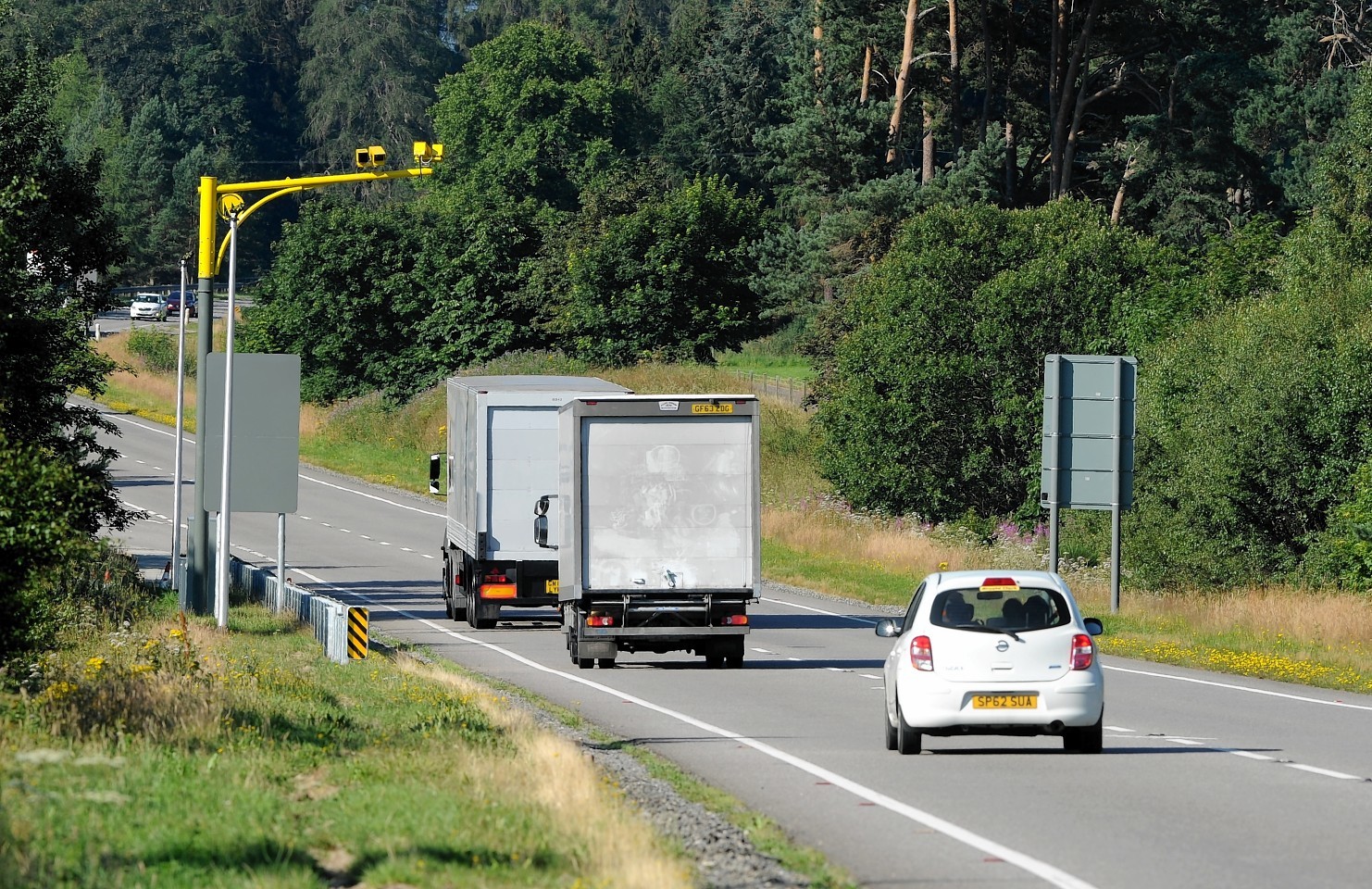Fewer than 300 people have been caught speeding by the controversial A9 average speed cameras in three months, according to government figures released today.
The “yellow vultures”, which cover the A9 from Dunblane to Inverness, were switched on in October.
No more than four vehicles a day were detected by the cameras for exceeding the speed limit — 298 in total.
According to the figures, examples of excessive speeding — 10 mph or more above the limit — are down by 97 per cent, and overall speeding of drivers is down from around one in three drivers to one in twenty.
There is no evidence, according to the A9 Safety Group, that drivers are avoiding the A9 — despite Highland MP Danny Alexander claiming last year that drivers were using “rat runs” to avoid the cameras by using other routes.
The chair of the A9 Safety Group, Transport Scotland’s Stewart Leggett, said today: “It is very encouraging to see the improved driver behaviour following the introduction of the average speed cameras and HGV speed limit pilot, ahead of the dualling.
“Drivers are clearly paying heed and moderating their speed, and we welcome this positive contribution to road safety on the A9.
“The low number of drivers being detected by the cameras and the speed profiles from along the route indicates the early effectiveness of the cameras in improving behaviour; but the A9 would be safer still if every driver observed the limits. We don’t want drivers facing fines and the cameras have never been an alternative to dualling.”
The cost of the cameras is approximately £3 million, with plans in place to dual the road from Perth to Inverness by 2025 expected to cost £3 billion.
Chief Superintendent Iain Murray, Head of Road Policing at Police Scotland, said: “This is an encouraging start. In the first three months of operation we have seen a more than eight-fold decrease in the number of people caught speeding on this stretch of road compared with the same time last year when there were 2,493 offences recorded.
“It is clear that the cameras are changing driver behaviour in the way that we expected. This will undoubtedly help to make the A9 safer for all road users.
“Speeding is not the sole cause of collisions on the route and we shall continue to engage positively with those who put themselves and others in danger through risky or illegal driving behaviour.
“Safety remains the responsibility of all road users and it is important that we interact appropriately with each other on the A9, and all of the other roads in Scotland.”
Journey times have increased on the road, in line with predictions given when the cameras were switched on.
Michael McDonnell, Director of Road Safety Scotland, said that the slight increase could be explained by roadworks that were in place as part of the dualling programme, as well as the severe weather slowing drivers down.
Feedback from hauliers suggests a significant reduction in journey times for HGVs, with a pilot scheme allowing them to drive at 50mph.
Reid of the Road Haulage Association said today: “Almost universally our members report that the flow of traffic is much improved and that journey times if anything can be slightly shorter.
“Recently, one of our members carried out an experiment by driving the A9 the day before the speed trial began then replicating the journey after the trial started.
“Journey times from Perth to Inverness and back were reduced substantially at 50mph, even with the addition of the speed cameras — with only an additional 0.5 litre of diesel used.
“Our member reported the journey was far less stressful because there was a marked reduction in the need for any vehicle to overtake.”
Mike Burns, spokesman for A9 Average Speed Cameras Are Not the Answer, said his group had looked at details of more than 100,000 accidents on the road since 2004.
He said: “Only 2 per cent were determined to be down to speeding and the rest were down to incidents of, for example, foreign drivers being on the wrong side of the road, poor overtaking and right-turn manoeuvres over dual carriageways.
“If these cameras were such a success, why is the A9 Safety Group now considering shutting right turns to stop right-turn accidents?
“The cameras were meant to be the be all and end all of all accidents, but they simply are not.”
